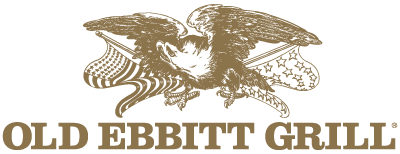OYSTER HAPPY HOUR
Served daily from 3:00pm to 5:00pm & 11:00pm to 1:00am
1⁄2 Dozen...15.99 Dozen...27.99
Discounts on Raw Bar Platters
$10 off Caviar
$5 off Conservas
View Menu"The time has come" the Walrus said
In November 1994, Old Ebbitt Grill's Oyster Bar was reopened, receiving accolades from guests & press alike, including Washington Post food critic Eve Zibart, writing in August 1995, said that its highly polished woodwork, counter facing the ice bed and shuckers, and excellent selection of oysters made it a "first-class raw bar."
The raw bar had taken 2 year-hiatus after nationwide reports of widespread bacterial contamination in the U.S. oyster crop. When the Old Ebbitt Grill reopened at its current location in October of 1983, oysters were sold on the half shell. The only oysters served back then were Blue Point oysters, harvested from Long Island Sound off the coast of Connecticut. Shipped in non-descript boxes, these oysters were the norm for all serving oysters in the Northeast and mid-Atlantic states.
Luckily, in 1994 Jon Rowley, a self-proclaimed seafood consultant, and oyster aficionado approached us to introduce us to a new breed of oyster growers. While aquaculture was gaining in popularity, it was just the tip of the iceberg for oysters. It is through aquaculture that oysters have made a remarkable comeback. Oysters have gone “boutique” in almost the same way that wine and artisanal cheese have done in this country.
Through more research, Jon’s assistance, and hard work on the part of the Old Ebbitt Grill team, oysters were put back on the menu. Our pledge to provide the best oyster program gave birth to the Oyster Eater’s Bill of Rights. It has proved wildly successful and is now the oyster bar all others are judged against. Since then we have expanded the program to six Clyde's restaurants - Clyde's of Georgetown, Clyde's Willow Creek Farm, Clyde’s at Mark Center, Tower Oaks Lodge, Clyde’s of Gallery Place, and Clyde’s of Chevy Chase.
***
Sadly, Jon Rowley passed away on October 4, 2017. An excerpt from his obituary (Leson, Nancy, The Seattle Times, 5 October 2017):
He made his own way to Europe and began a lifelong obsession with oysters after reading Ernest Hemingway’s “A Moveable Feast.” The day before Mr. Rowley died, he was still reading and considering his favorite passage, the one that ends “as I drank their cold liquid from each shell and washed it down with the crisp taste of the wine, I lost the empty feeling and began to be happy and to make plans.”
Oyster Eater's Bill of Rights
- Served in a casual, convivial atmosphere by knowledgeable staff.
- Expertly shucked and presented traditionally on an iced platter within five minutes of opening.
- Presented with a selection of oyster-friendly wines and ales.
- Harvested in their season from certified clean waters.
- Laboratory tested.
- Named on the menu by species and growing location.
- Received directly from farms that are interstate-certified shellfish shippers.
- Documented by tags indicating harvest location and date (available by request).
- Valued as an important part of the history and culture of this saloon.
“Let's throw a party” Tom said
Old Ebbitt Grill International Wines for Oysters Competition was inspired by the Pacific Coast Oyster Wine Competition in Seattle, Washington. Seafood consultant, Jon Rowley organized the event over twenty five years ago, comparing his Competition to “a dating service for wines and oysters.” In 1995, David Moran, Area Director of Operations at Clyde’s Restaurant Group (CRG) was sent to judge in Rowley’s Competition and immerse himself in Seattle’s oyster culture.
Upon his return, Moran decided CRG needed to replicate the Competition on the East Coast at the Old Ebbitt Grill. Tom Meyer, President of CRG suggested, “Why don’t we just throw a great party with oysters and wine?” A few dozen oysters and a few glasses of Chablis later, the first large-scale International Wines for Oysters Competition and Oyster Riot were born.
Learn MoreOysters for a Cause
A founding member and steadfast supporter of the Oyster Recovery Partnership’s Shell Recycling Alliance, a nonprofit helping to restore oyster populations in the Chesapeake Bay, Old Ebbitt Grill donates their used oyster shells. Since the Alliance's formation in 2010, Old Ebbitt Grill has recycled 18,814 bushels of oyster shells (and counting!), enough shells to support the planting of over 88 million baby oysters on protected oyster reefs, which filter water and provide important habitat for marine life.
To help the Shell Recycling Alliance, a new element to the Oyster Riot was introduced, a Saturday afternoon event known as " the Matinee" is held with a portion of the proceeds being donated to the Oyster Recovery Partnership.
More Information on Recycling Oysters...
A cornerstone species in the Chesapeake Bay ecosystem, oysters feed by filtering the water in which they live. A single oyster can filter anywhere from 50 – 70 gallons of water per day! The more oysters that are in the Bay, the cleaner the Bay will become. Clean water allows sunlight to penetrate up to 10 feet spurring germination of the Bay’s aquatic grasses (submerged aquatic vegetation or SAV). SAV provides escape cover for juvenile crabs and fish, puts oxygen in the water through photosynthesis, and calms the wave action, preventing shoreline erosion. So in a nutshell, our beloved oyster benefits every living organism in the bay ecosystem and is helping to save the Chesapeake Bay!
Oyster shells are the best, most natural material used to rebuild oyster reefs. Rather than dumping our shells in a landfill, we donate ours to be recycled, cleaned, treated with baby oysters, and put back into the waters of the Chesapeake Bay.
Old Ebbitt and Oyster Recovery Partnership (ORP) have a long-standing and mutually beneficial shell recycling history. Specifically, our 2009 Oyster Riot was the pilot for what is now ORP's Shell Recycling Alliance (SRA). We were the first to be willing to walk the walk alongside ORP to achieve meaningful Chesapeake Bay oyster restoration. Now, SRA annually collects and recycles 30,000 bushels of shells from 200 restaurants in the DMV (over 300,000 bushels in the program's lifespan), AND provides 33% of the shell ORP requires to accomplish its annual restoration work of planting more than 1 billion oysters in the Chesapeake Bay.


